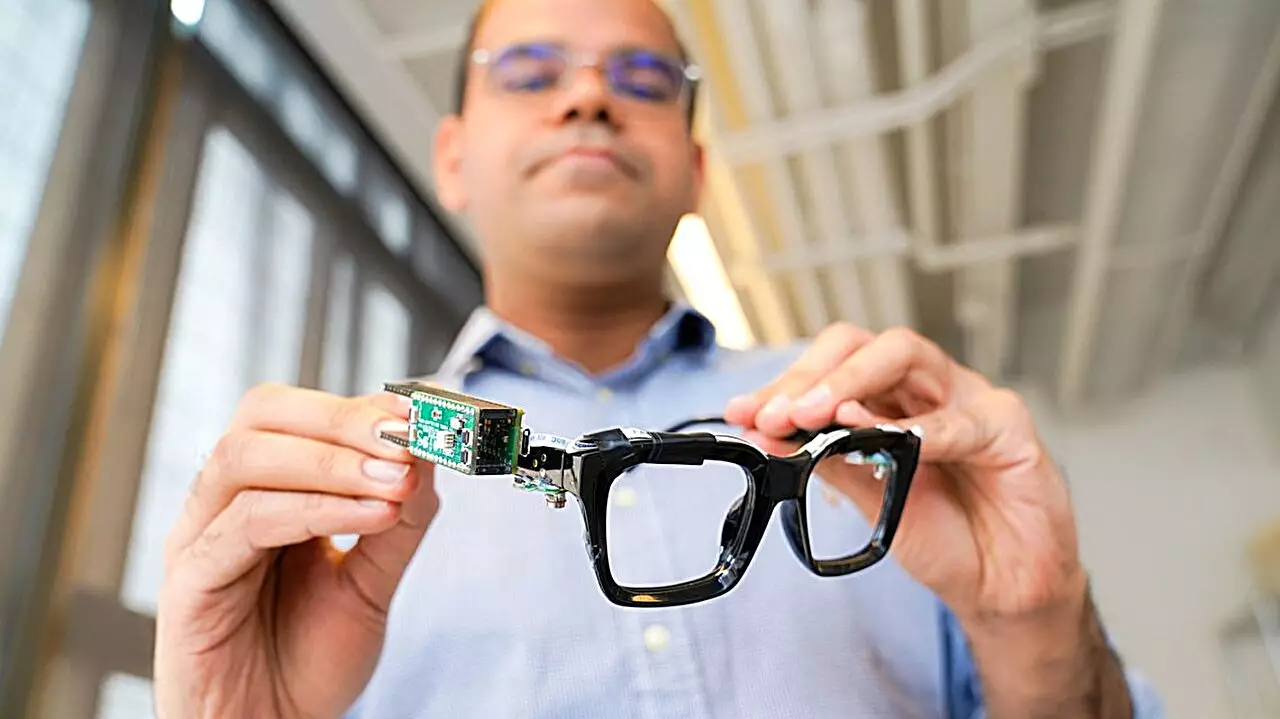Wearable body-sensing technology has come a long way since its inception. From mapping oceans to detecting enemy submarines and finding sunken ships, sonar technology has evolved into a miniature form that is now revolutionizing the wearable technology industry. Cornell researchers have developed PoseSonic, a sonar-equipped wearable that can track upper body movements in 3D using inaudible soundwaves and artificial intelligence (AI). This groundbreaking innovation has the potential to enhance augmented reality, virtual reality, and provide detailed physical and behavioral data for personal health.
The potential applications of PoseSonic are vast, according to Saif Mahmud, a doctoral student in the field of information science. By collecting extensive data through body-sensing technology like PoseSonic, individuals can become more mindful of their behaviors and actions. This wearable device can detect fine-grained human activities in real-world settings, offering insights into personal habits and behaviors. The integration of inaudible acoustics and AI in a lightweight, low-cost, and privacy-conscious wearable makes PoseSonic a practical and efficient tool for everyday use.
PoseSonic consists of eyeglasses equipped with micro sonar technology. Two pairs of tiny microphones and speakers, roughly the diameter of a pencil, are attached to the hinges of the eyeglasses. These speakers emit inaudible soundwaves that bounce off the upper body and are captured by the microphones, generating an echo profile image. PoseSonic’s machine-learning algorithm then analyzes this image to estimate the body pose with near-perfect accuracy. Unlike other wearable pose-tracking systems, PoseSonic does not require an initial training session with the user, making it quick and convenient to use.
The capabilities of PoseSonic extend beyond basic upper body pose estimation. The system can track movements at nine body joints, including the shoulders, elbows, wrists, hips, and nose. This comprehensive tracking allows for more accurate and detailed analysis, particularly in estimating head positioning. Unlike wearable devices that rely on video cameras, PoseSonic’s acoustic sensing technology requires minimal power, consuming only a fraction of the energy. This not only makes the device smaller and less obtrusive but also resolves privacy concerns associated with video recording.
As wearable technology continues to evolve, PoseSonic represents a significant breakthrough in the field of body-sensing. Its ability to provide real-time, detailed data on personal health and behaviors opens up new possibilities for improving one’s well-being. Moreover, the integration of PoseSonic with augmented reality and virtual reality technologies can enhance immersive experiences and transform various industries such as gaming, healthcare, fitness, and more. With further advancements and refinements, PoseSonic has the potential to revolutionize the way we interact with technology and ourselves.
PoseSonic’s combination of inaudible acoustics, AI, and wearable technology marks a milestone in the development of body-sensing innovations. Cornell researchers have successfully harnessed the power of sonar technology in a compact and unobtrusive wearable device. By enabling real-time tracking of upper body movements and providing valuable insights into personal habits and behaviors, PoseSonic opens up new possibilities for improving personal well-being and enhancing immersive experiences. The future of wearable body-sensing is here, and PoseSonic is at the forefront of this cutting-edge revolution.



Leave a Reply